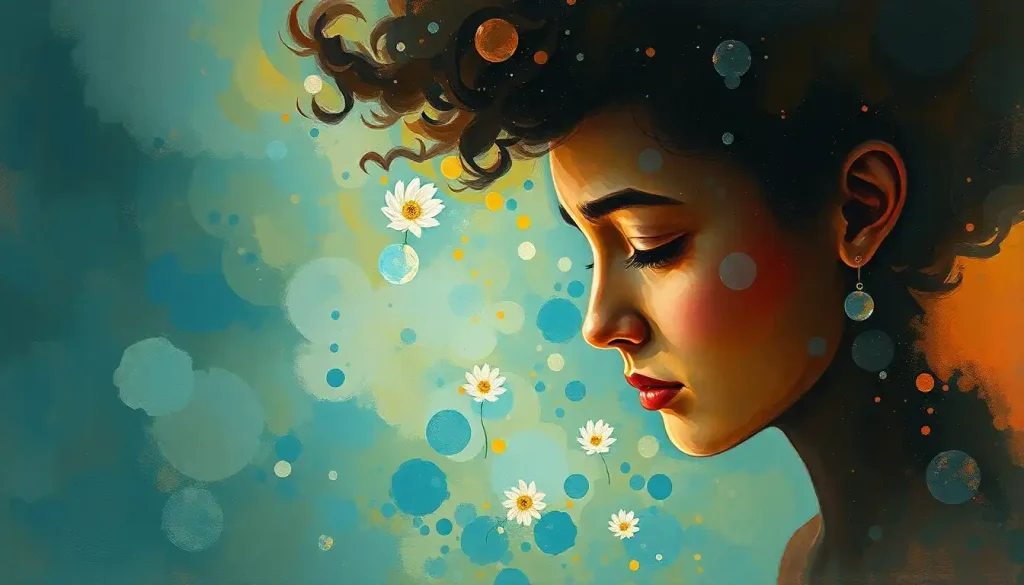Falling Blossom Emotion: Understanding The Beauty And Impact Of Nature's Ephemeral Moments
The falling blossom emotion represents a profound connection between human sentiment and the fleeting beauty of nature. It's an experience that transcends mere observation, delving into the emotional response we have towards the transient nature of cherry blossoms and other floral displays. This phenomenon is not just about appreciating beauty; it's about understanding how these moments influence our emotional well-being and perception of life.
As the cherry blossoms fall, people from all over the world gather to witness this spectacular event. The emotion evoked by this natural phenomenon is deeply rooted in cultural traditions and personal experiences. It serves as a reminder of life's impermanence and the importance of cherishing every moment.
Through this article, we will explore the concept of falling blossom emotion in detail. From its historical and cultural significance to its psychological impact, we will uncover how this natural occurrence resonates with human emotions and enriches our lives.
Read also:Too Short Age Understanding The Challenges And Solutions
Table of Contents
- Biography of Falling Blossom Emotion
- Historical Context of Falling Blossom Emotion
- Cultural Significance
- Psychological Impact
- Seasonal Patterns
- Emotional Response
- Health Benefits
- Representation in Art and Literature
- Modern Interpretations
- Conclusion
Biography of Falling Blossom Emotion
The falling blossom emotion has no single origin story but is rather a collective human experience that has evolved over centuries. It is deeply intertwined with the cultural practices of countries like Japan, where hanami (flower viewing) is a national tradition. Below is a brief overview of the phenomenon:
| Attribute | Details |
|---|---|
| Origin | Historical traditions in East Asia, particularly Japan |
| Time Period | Spring season, typically late March to early May |
| Cultural Context | Symbol of life's transience and beauty |
| Modern Relevance | Inspiration for art, literature, and mindfulness practices |
Historical Context of Falling Blossom Emotion
The history of falling blossom emotion dates back thousands of years. In ancient Japan, the cherry blossom was considered a symbol of the samurai class, representing their fleeting yet impactful lives. The Heian period (794-1185) saw the rise of hanami as a formal practice, where aristocrats gathered under blooming trees to compose poetry and reflect on life's impermanence.
Key Historical Events
- 8th Century: First documented accounts of hanami in Japanese literature
- 16th Century: Samurai class adopts cherry blossoms as a symbol of their ethos
- 20th Century: Global recognition of cherry blossoms through cultural exchanges
Cultural Significance
Culturally, the falling blossom emotion is celebrated in various forms across Asia. In Japan, it is tied to the concept of mono no aware, which means "the pathos of things" or an awareness of impermanence. Similarly, in China, plum blossoms are revered for their resilience and beauty, while in Korea, magnolias symbolize nobility and strength.
Cultural Practices
These practices often involve communal gatherings, traditional music, and food. For instance, during hanami in Japan, families and friends come together to enjoy picnics under the cherry trees, creating lasting memories.
Psychological Impact
From a psychological perspective, the falling blossom emotion can have a profound impact on mental health. Studies have shown that exposure to natural beauty, especially during seasonal transitions, can reduce stress levels and improve mood. This is attributed to the release of endorphins and the calming effect of nature.
Benefits of Nature Exposure
- Reduction in cortisol levels
- Improved focus and attention
- Enhanced emotional resilience
Seasonal Patterns
The falling blossom emotion is closely linked to seasonal changes. In temperate regions, cherry blossoms typically bloom in early spring, coinciding with the transition from winter to warmer weather. This timing adds to the emotional weight of the experience, as it marks the beginning of new life and renewal.
Read also:Discover Notable Celebrities And Historical Figures Born On March 15 Birthdays
Seasonal Effects
Research conducted by the National Center for Biotechnology Information (NCBI) highlights how seasonal changes influence mood and behavior. The arrival of spring, marked by blooming flowers, is often associated with increased positivity and energy.
Emotional Response
On an emotional level, the falling blossom phenomenon evokes a wide range of feelings, from awe and joy to melancholy and reflection. These emotions are often influenced by personal experiences and cultural background. For some, the falling petals symbolize the passage of time, while for others, they represent new beginnings.
Emotional Triggers
- Aesthetic appreciation of beauty
- Reflection on life's impermanence
- Connection to nature and community
Health Benefits
Engaging with the falling blossom emotion can have tangible health benefits. Spending time in nature has been shown to improve cardiovascular health, boost immune function, and enhance overall well-being. The practice of shinrin-yoku, or forest bathing, is a testament to the healing power of natural environments.
Scientific Evidence
According to a study published in the International Journal of Environmental Research and Public Health, participants who spent time in forested areas experienced lower blood pressure and reduced symptoms of anxiety and depression.
Representation in Art and Literature
Artists and writers have long been inspired by the falling blossom emotion. From traditional Japanese ukiyo-e prints to contemporary poetry, this theme has been explored in various mediums. Notable works include Matsuo Basho's haikus, which capture the essence of cherry blossoms in just a few lines.
Artistic Influences
- Paintings depicting cherry blossom festivals
- Poems reflecting on life's transience
- Music compositions inspired by springtime blooms
Modern Interpretations
In today's digital age, the falling blossom emotion continues to inspire new forms of expression. Social media platforms like Instagram and Pinterest are filled with images and videos of cherry blossoms, allowing people worldwide to share in this experience. Virtual reality technology is also being used to recreate the sensation of being surrounded by falling petals.
Technological Advancements
These advancements not only democratize access to natural beauty but also enhance our understanding of its emotional impact. Through augmented reality, individuals can immerse themselves in simulated environments, experiencing the falling blossom emotion without geographical constraints.
Conclusion
In conclusion, the falling blossom emotion is a multifaceted experience that touches on cultural, psychological, and artistic dimensions. It serves as a reminder of life's impermanence and the importance of cherishing every moment. By engaging with this phenomenon, we can enhance our emotional well-being and deepen our connection to nature.
We invite you to share your thoughts and experiences in the comments below. How does the falling blossom emotion resonate with you? Additionally, explore other articles on our site to discover more about the intersection of nature and human emotion.


